
Bermuda is a British Overseas Territory in the North Atlantic Ocean. The closest land outside the territory is in the American state of North Carolina, about 1,035 km (643 mi) to the west-northwest.

Bermuda is an overseas territory of the United Kingdom in the North Atlantic Ocean. Located off the east coast of the United States, it is situated around 1,770 km (1,100 mi) northeast of Miami, Florida, and 1,350 km (840 mi) south of Halifax, Nova Scotia, west of Portugal, northwest of Brazil, 1,759 km (1,093 mi) north of Havana, Cuba and north-northeast of San Juan, Puerto Rico. The nearest landmass is Cape Hatteras, North Carolina, about 1,030 km (640 mi) west-northwest, followed by Cape Sable Island, Nova Scotia, Canada 1,236 km northward. Although commonly referred to in the singular, the territory consists of approximately 138 islands, with a total area of 57 km2 (22 sq mi).
Rockfish is a common term for several species of fish, referring to their tendency to hide among rocks.

The white-eyed vireo is a small songbird of the family Vireonidae.
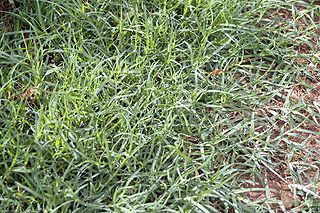
Cynodon dactylon, commonly known as Bermuda grass, and also known as Couch grass in Australia & New Zealand is a grass found worldwide. It is native to Europe, Africa, Australia and much of Asia. It has been introduced to the Americas. Contrary to its common name, it is not native to Bermuda and is in fact an abundant invasive species there. In Bermuda it has been known as "crab grass". Other names are Dhoob, dūrvā grass, ethana grass, dubo, dog grass, dog's tooth grass, Bahama grass, crab grass, devil's grass, couch grass, Indian doab, arugampul, grama, wiregrass and scutch grass.
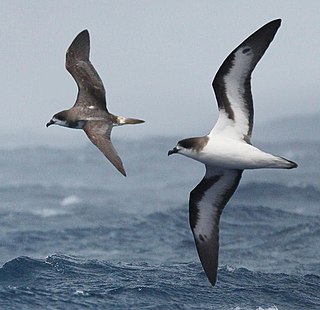
The Bermuda petrel is a gadfly petrel. Commonly known in Bermuda as the cahow, a name derived from its eerie cries, this nocturnal ground-nesting seabird is the national bird of Bermuda and can be found pictured on Bermudian currency. The Bermuda petrel is the second rarest seabird on the planet. They have medium-sized body and long wings, a greyish-black crown and collar, dark grey upper-wings and tail, white upper-tail coverts and white under-wings edged with black, and the underparts are completely white.
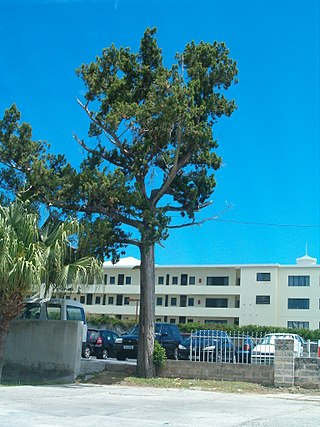
The flora and fauna of Bermuda form part of a unique ecosystem due to Bermuda's isolation from the mainland of North America. The wide range of endemic species and the islands form a distinct ecoregion, the Bermuda subtropical conifer forests.

George Brown Goode, was an American ichthyologist and museum administrator.
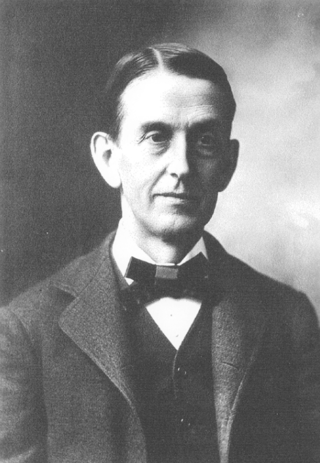
Sidney Irving Smith was an American zoologist.
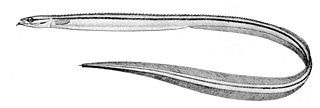
The quillfish,, is a species of marine ray-finned fish, it is the only species in the genus Ptilichthys and family Ptilichthyidae. This fish occurs in the northern North Pacific Ocean.

Juniperus bermudiana is a species of juniper endemic to Bermuda. This species is most commonly known as Bermuda cedar, but is also referred to as Bermuda juniper. Historically, this tree formed woodland that covered much of Bermuda. Settlers cleared part of the forest and the tree was used for many purposes including building construction and was especially prized for shipbuilding. Scale insects introduced during the Second World War construction of United States airbases in Bermuda devastated the forests, killing over 99% of the species. Since then, the salt tolerant Casuarina equisetifolia has been planted as a replacement species, and a small number of Bermuda cedars have been found to be resistant to the scale insects. Populations of certain endemic birds which had co-evolved with the tree have plummeted as a result of its demise, while endemic cigalas and solitary bees were driven to extinction.

Cassine laneana, commonly known as the Bermuda olivewood, is a species of large tree in the staff vine family, Celastraceae, that is endemic to the islands of Bermuda. Although once found in the extensive subtropical coniferous forests that covered the islands, it is currently restricted to small protected areas, such as Spittal Pond. C. laneana can grow anywhere from 25 to 40 feet tall, with leaves that are 1 to 2.5 inches long and 0.5 to 1.5 inches wide. The leaves are also a deep green colour when they are older and a bright green colour when they are younger. C. laneana flowers in late spring and early summer and produces a small ovate berry that is an olive colour and 0.25 to 0.5 inches long.

Leucosyrinx is a genus of sea snails, marine gastropod mollusks in the family Pseudomelatomidae.

Trachinotus goodei, the palometa, is an ocean-going game fish of the family Carangidae. Other common names include banner pompano, camade fish, cobbler, gafftopsail, great pompano, joefish, longfin pompano, old wife, sand mackerel, streamers jack, wireback. This fish is native to the western Atlantic Ocean from Massachusetts to Bermuda to Argentina. It can be found in the Gulf of Mexico and the Caribbean Sea.

Lucania is a genus of North American ray-finned killifishes in the family Fundulidae. The genus can be found in northeastern Mexico and the southeastern and eastern parts of the United States, with L. parva ranging as far north as Massachusetts. They are mostly found in fresh water, although L. parva also is frequent in coastal brackish water. They are sometimes held in aquariums.

Sebastes goodei, the chilipepper rockfish and chilipepper, is a species of marine ray-finned fish belonging to the subfamily Sebastinae, the rockfishes, part of the family Scorpaenidae. This species lives mainly off the coast of western North America from Baja California to Vancouver.

Aforia goodei, common name Goode's turrid, is a species of sea snail, a marine gastropod mollusk in the family Turridae, the turrids.
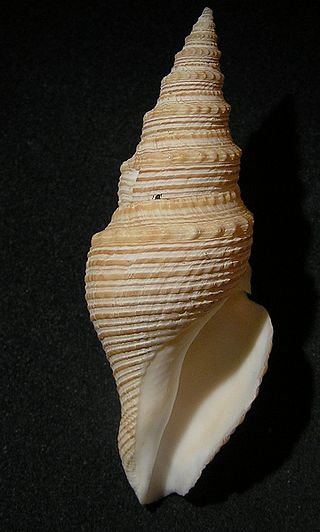
Aforia is a genus of sea snails, marine gastropod mollusks in the family Cochlespiridae.

Lucania goodei, the bluefin killifish, is a small species of fish in the topminnow family Fundulidae. It is native to the southeastern United States, but has been introduced to California, Texas and North Carolina. Other common names for the fish include Florida blue dace.
The Sonoran horned lizard, also known commonly as Goode's desert horned lizard and el camaleón de Sonora in Mexican Spanish, is a species of horned lizard in the family Phrynosomatidae. The species is native to Arizona in the United States and to Sonora in Mexico.
















